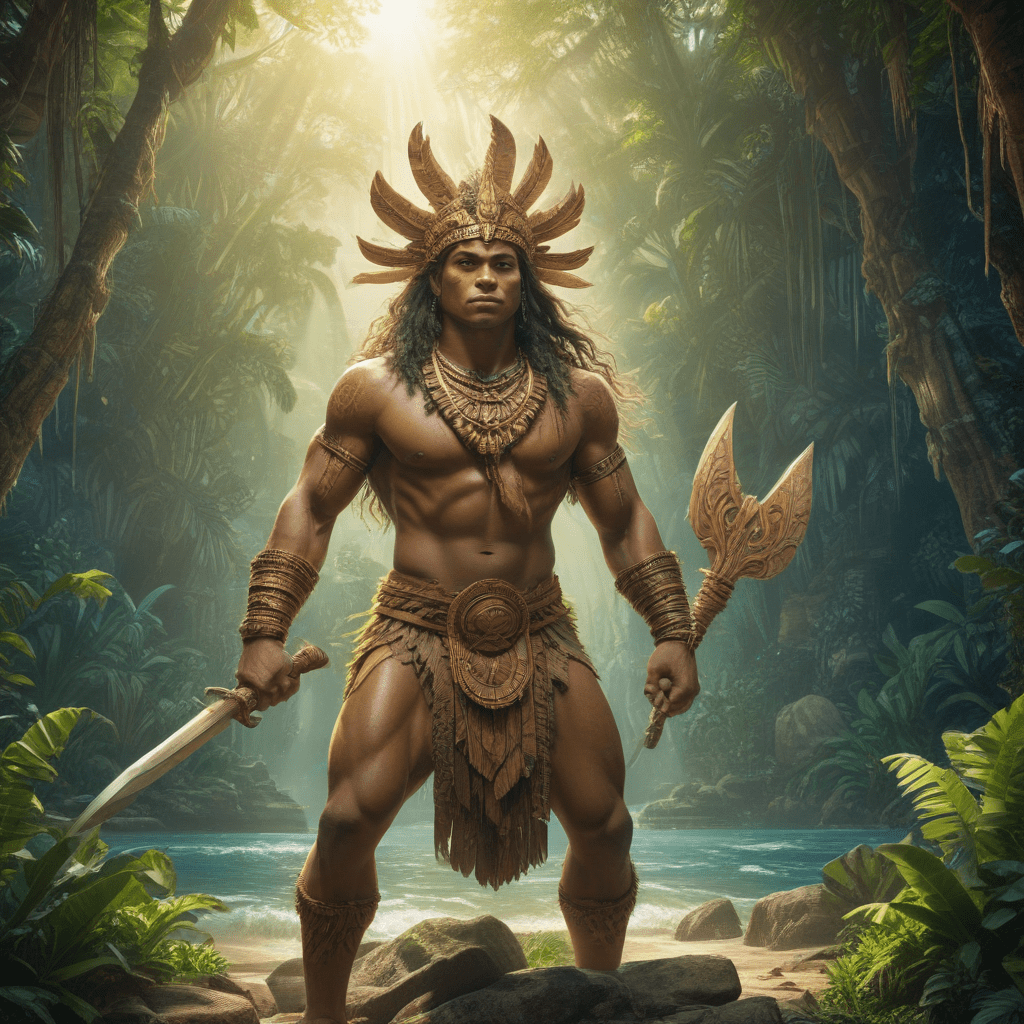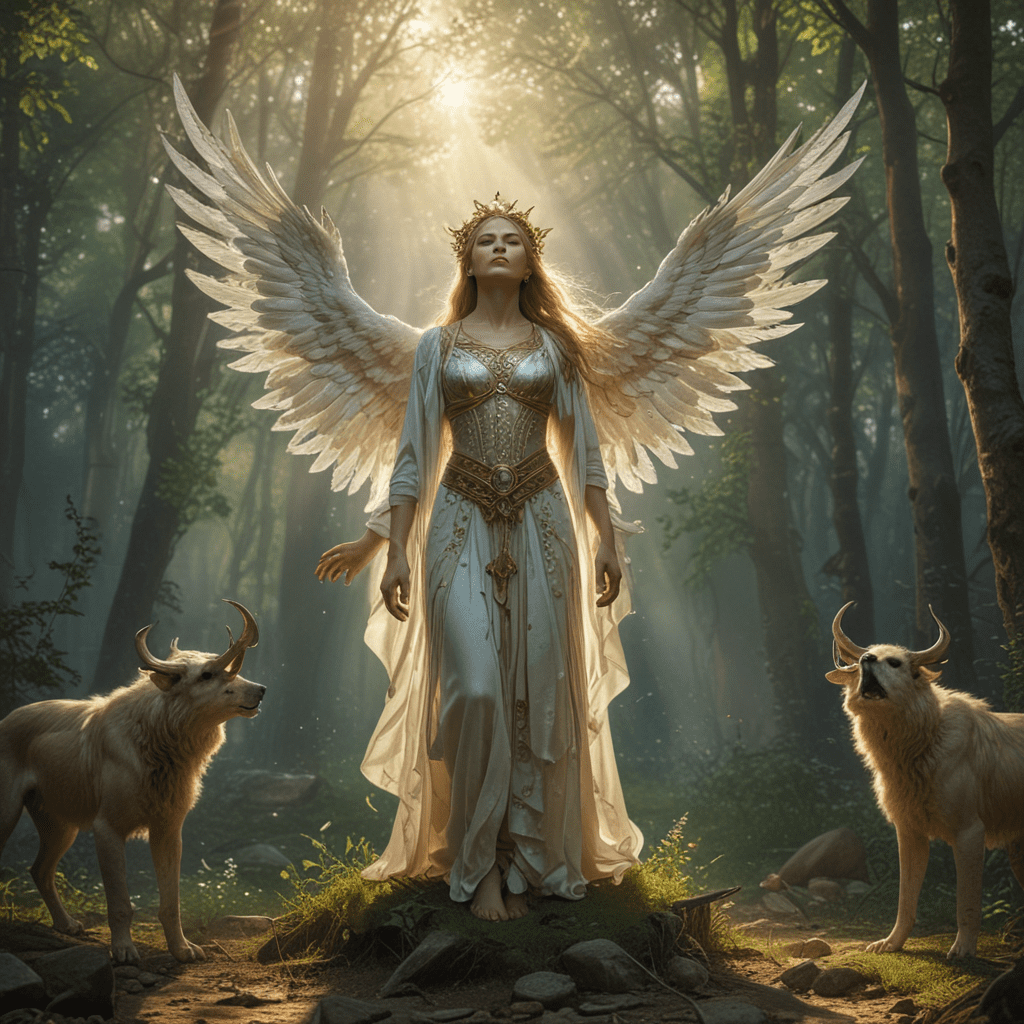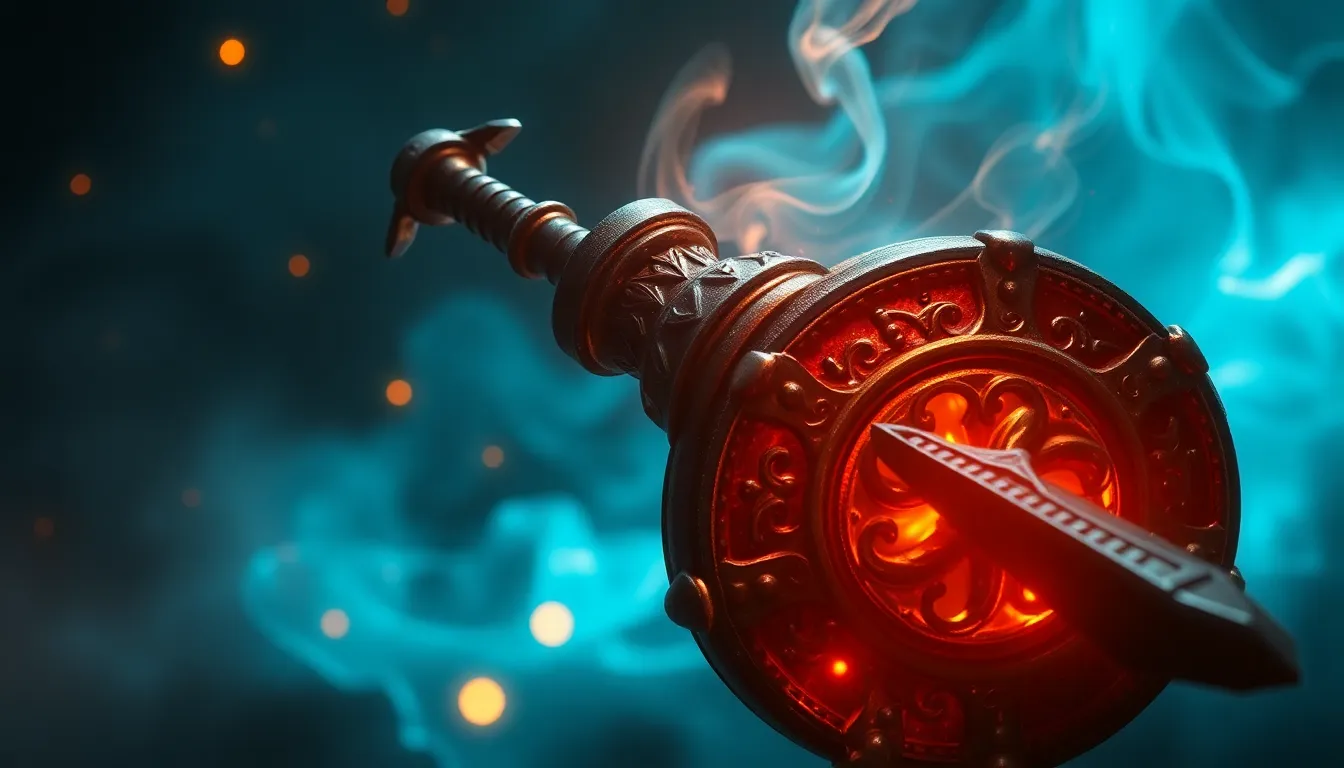The Birth of Quetzalcoatl: A Tale of Creation and Cosmic Power
In the rich tapestry of Aztec mythology, Quetzalcoatl stands as one of the most revered and enigmatic deities. His name, meaning "Feathered Serpent," hints at the complex and multifaceted nature of this god. According to Aztec creation myths, Quetzalcoatl played a crucial role in the birth of the world and the creation of humanity.
The story of Quetzalcoatl's birth is intricately woven with the deeds of other powerful deities. It is said that he emerged from the heart of the god Tlaloc, the god of rain and water. This symbolic connection suggests that Quetzalcoatl was associated with the life-giving forces of nature and played a vital role in the cycle of creation and renewal.
The creation myth also reveals a deep connection between Quetzalcoatl and the concept of duality. He is often portrayed as a twin, representing the balance of opposing forces, such as light and darkness, creation and destruction. The duality of his nature is reflected in his association with both the morning and evening stars, symbolizing the constant cycle of day and night.
The Attributes of Quetzalcoatl: A God of Knowledge, Arts, and Peace
Quetzalcoatl was not only revered as a creator god but also as a patron of knowledge, arts, and peace. He was considered the bringer of civilization, teaching the Aztecs the skills of agriculture, weaving, metalworking, and astronomy.
The Aztecs believed that Quetzalcoatl introduced them to the calendar, the art of writing, and the principles of governance. He was also credited with establishing religious rituals and ceremonies, promoting social order and harmony.
His association with the wind, represented by his feathered serpent form, symbolized the breath of life and the power of communication. His presence was believed to bring bountiful harvests and prosperity, while his absence was associated with drought and famine.
The Feathered Serpent: Symbolism and Interpretation
The image of the feathered serpent is perhaps the most iconic representation of Quetzalcoatl. This powerful symbol embodies a combination of earth and sky, representing the intertwined forces of the physical world and the divine realm. The serpent, often associated with wisdom and fertility in many cultures, symbolizes Quetzalcoatl's connection to the earth and its life-giving powers.
The feathers, on the other hand, represent the divine and the spiritual realm. They symbolize the power of knowledge, the lightness of spirit, and the ability to soar above the mundane. The combination of these two elements highlights the duality of Quetzalcoatl's nature, his role as both a god of the material world and the spiritual realm.
The feathered serpent also symbolizes the cycle of life, death, and rebirth. The serpent sheds its skin, symbolizing renewal and transformation, while the feathers represent the ethereal and eternal. This cyclical nature is reflected in Quetzalcoatl's own story, which involves a period of exile followed by a promise of return.
Quetzalcoatl’s Transformation: From Divine King to Exile
Despite his status as a benevolent and wise god, Quetzalcoatl's story is not without its tragic elements. According to legend, he was tricked by his brother, Tezcatlipoca, the god of darkness and war, into consuming a forbidden drink.
This act led to a transgression against the gods, causing Quetzalcoatl to experience a period of shame and despair. He left his position as ruler of the gods and went into exile, vowing to return at a future time.
The tale of Quetzalcoatl's exile speaks to the human frailties of even the most powerful beings. It highlights the themes of temptation, betrayal, and the consequences of falling from grace.
The Legend of Quetzalcoatl’s Return: An Enduring Hope
Despite his exile, Quetzalcoatl remained a powerful symbol of hope and redemption for the Aztecs. His departure was not seen as a final farewell but rather a temporary absence. The Aztecs believed that he would return one day, bringing with him a new era of peace and prosperity.
This belief in Quetzalcoatl's return played a significant role in Aztec society. It provided a sense of purpose and hope for the future, reminding the people that even in the face of adversity, there was a brighter future waiting for them.
The Influence of Quetzalcoatl on Aztec Culture and Society
Quetzalcoatl's influence extended far beyond the realm of mythology, deeply impacting Aztec culture and society. His teachings shaped their daily lives, from agriculture to governance, art to religion.
The Aztecs believed that Quetzalcoatl introduced them to the art of agriculture, teaching them how to cultivate crops and harness the power of the earth. This knowledge was essential for their survival, allowing them to establish thriving communities and build a complex civilization.
Quetzalcoatl was also considered a patron of the arts, inspiring creativity and craftsmanship. The Aztecs revered his influence in various forms of artistic expression, including pottery, weaving, metalworking, and featherwork, reflecting their appreciation for beauty and skill.
His teachings on governance and social order were crucial in shaping Aztec society. The Aztecs believed that Quetzalcoatl taught them the importance of peace, justice, and harmony. His legacy instilled in them a strong sense of community and a respect for the laws of the land.
Quetzalcoatl and the Arrival of the Spanish: A Historical Twist of Fate
The legend of Quetzalcoatl took an unexpected turn with the arrival of the Spanish in the 16th century. When Hernán Cortés arrived in Mexico, he was mistaken by some Aztec leaders for the returning Quetzalcoatl. This misunderstanding arose from various factors, including the descriptions of Quetzalcoatl as fair-skinned and bearded, which resembled the Spanish conquistadors.
The belief that Cortés was Quetzalcoatl fueled the initial acceptance of the Spanish by some Aztec nobles. However, this acceptance was short-lived. The Spanish conquest of Mexico quickly exposed the true nature of the conquistadors, who were not benevolent gods but ruthless conquerors.
Despite this historical twist, the myth of Quetzalcoatl continued to play a powerful role in the lives of the Aztec people. It served as a reminder of their cultural heritage and the enduring hope for a better future, even in the face of oppression.
Archaeological Evidence of Quetzalcoatl: Unveiling the Mythological Reality
While Quetzalcoatl is primarily known through myth and legend, archaeological evidence provides fascinating insights into the real-life practices and beliefs surrounding this god. Archaeologists have uncovered numerous artifacts and structures that testify to the importance of Quetzalcoatl in Aztec culture.
Temples dedicated to Quetzalcoatl have been discovered throughout Mesoamerica, showcasing his presence as a prominent figure in Aztec religion. The most notable example is the Templo Mayor in Tenochtitlan, the Aztec capital. This massive pyramid, built over several centuries, boasts intricate carvings and sculptures depicting Quetzalcoatl and other deities.
Other archaeological evidence, such as sculptures, pottery, and murals, further illuminates the role of Quetzalcoatl in Aztec society. These artifacts offer a glimpse into the complex rituals and ceremonies that were dedicated to this god, reinforcing his significance in their spiritual life.
Theories on the Origin of the Quetzalcoatl Myth: Astronomy, Historical Figures, and Cosmic Events
The origins of the Quetzalcoatl myth remain a subject of debate among scholars. Various theories have been proposed to explain the genesis of this complex and enduring figure, each offering a unique perspective on the evolution of the myth.
One prominent theory suggests that Quetzalcoatl's origins lie in astronomical observations. The feathered serpent may have been associated with the planet Venus, whose appearances in the sky were significant to the ancient Aztec civilization. The cyclical nature of Venus's movements could have inspired the myth of Quetzalcoatl's exile and eventual return.
Another theory proposes that Quetzalcoatl is based on a real historical figure. Some scholars believe that the god may have been inspired by a powerful priest or ruler who played a significant role in the development of Aztec culture. This theory suggests that the real-life person was later transformed into a deity, becoming a symbol of wisdom, knowledge, and civilization.
Finally, some theories suggest that the myth of Quetzalcoatl arose from a combination of astronomical observations, historical events, and cosmic beliefs. The emergence of a great civilization, the awe-inspiring forces of nature, and the profound mysteries of the universe could have all contributed to the development of this complex and enduring myth.
Modern Interpretations of Quetzalcoatl: From Indigenous Beliefs to Contemporary Art
Beyond the realm of ancient mythology, Quetzalcoatl continues to inspire and captivate people today. His enduring legacy can be seen in modern interpretations of the myth, ranging from Indigenous beliefs to contemporary art.
Many Indigenous communities in Mexico still hold Quetzalcoatl in high regard, incorporating his symbolism into their cultural practices and rituals. His wisdom, peacefulness, and representation of the interconnectedness of life continue to resonate with contemporary Indigenous traditions.
Quetzalcoatl has also become a source of inspiration for contemporary artists. His image has been incorporated into various forms of artistic expression, from paintings and sculptures to music and literature. Modern artists continue to find inspiration in the duality of his nature, his connection to the natural world, and the hope he represents for a peaceful and prosperous future.
FAQ
What is the main significance of Quetzalcoatl in Aztec mythology?
Quetzalcoatl is one of the most significant deities in Aztec mythology, often revered as a creator god, patron of knowledge, and bringer of civilization. He was credited with providing the Aztecs with valuable skills, including agriculture, weaving, metalworking, and astronomy.
What are the key attributes of Quetzalcoatl?
Quetzalcoatl is associated with several key attributes, including knowledge, arts, peace, wind, morning and evening stars, and the cycle of life, death, and rebirth. His feathered serpent form represents duality, the balance of opposing forces, and the interconnectedness of the physical and spiritual realms.
What is the story of Quetzalcoatl's exile?
According to legend, Quetzalcoatl was tricked into consuming a forbidden drink by his brother Tezcatlipoca, leading to a transgression against the gods. This act caused him to experience shame and despair, leading him to leave his position as ruler of the gods and go into exile.
How did the arrival of the Spanish influence the myth of Quetzalcoatl?
The arrival of Hernán Cortés in Mexico led some Aztec leaders to believe that he was Quetzalcoatl returning, leading to initial acceptance of the Spanish. However, the Spanish conquest quickly revealed the conquistadors' true nature, shattering this belief.
What does the feathered serpent symbolize in Aztec mythology?
The feathered serpent symbolizes Quetzalcoatl's duality, representing the interconnectedness of earth and sky, wisdom and fertility, the physical world and the divine realm. It also signifies the cycle of life, death, and rebirth, reflecting the constant cycle of renewal and transformation.
What are some modern interpretations of Quetzalcoatl?
Quetzalcoatl continues to inspire and captivate people today. Modern interpretations of the myth include Indigenous beliefs that still hold him in high regard, and contemporary artists who find inspiration in his symbolism, particularly his duality, connection to nature, and the hope for a peaceful future.



